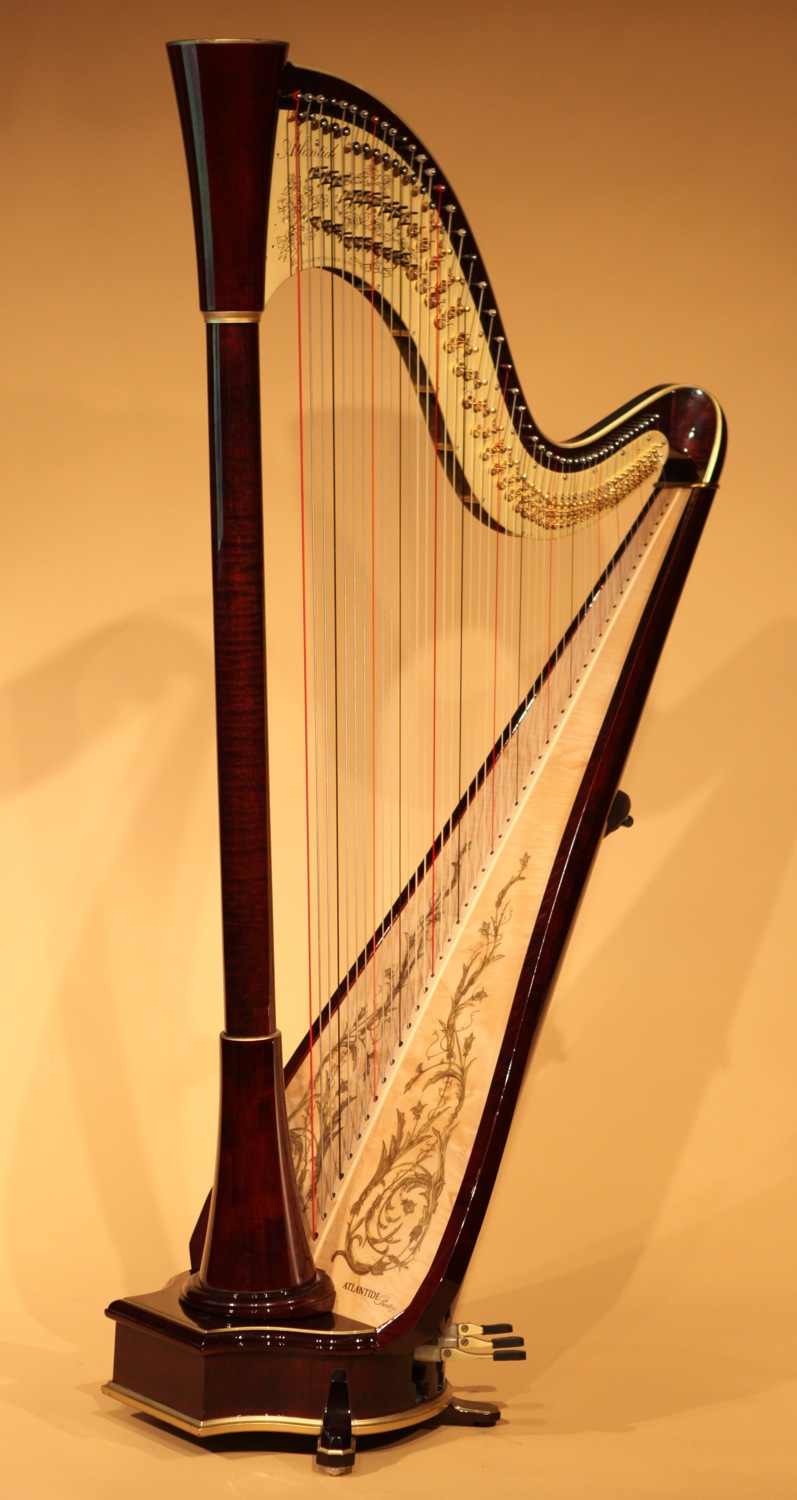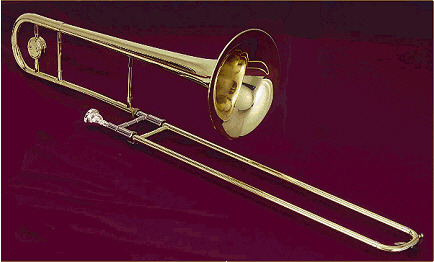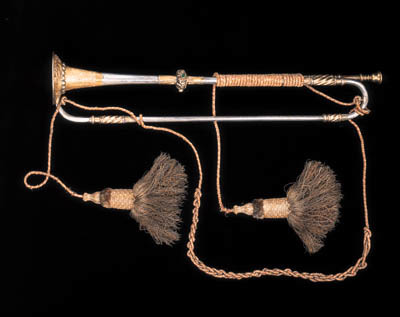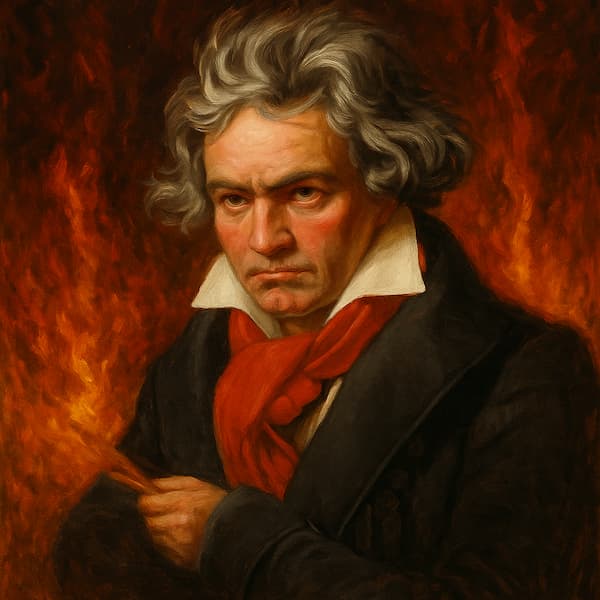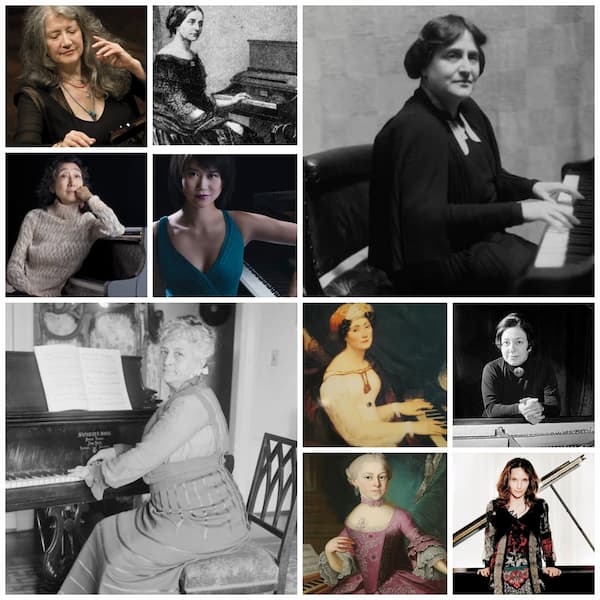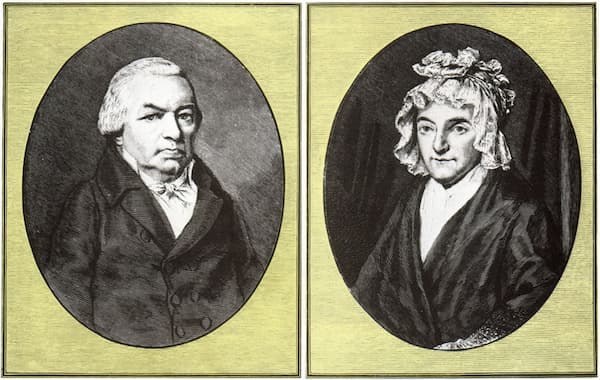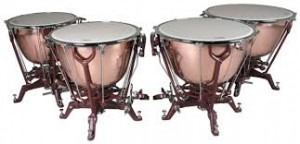
Timpani
We can divide the percussion section into two parts: tuned and untuned percussion. The tuned percussion instruments include drums such as the timpani, tuned bars of wood or metal such as the Xylophone, Marimba, Glockenspiel, and the Vibraphone; Tubular bells; and keyboard instruments such as the Celesta and the piano. Although we generally don’t think of the piano as a percussion instrument, when you think about how it’s played (hammers striking a string), it fits best with the rest of the struck instruments.
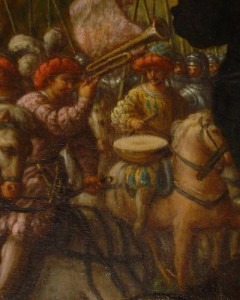
15th century timpani
Early percussion in the classical symphony usually only consisted of timpani, large tuned drums that could supplement the bass.
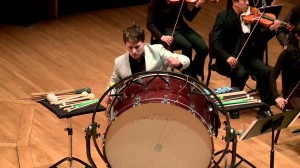
Bass Drum
In Orff’s Carmina burana, they start the first movement off with a real bang!
Orff: Carmina Burana: I. O Fortuna (London Philharmonic Choir; London Philharmonic Orchestra; Hans Graf, Conductor)
Building up from that bass note, we have other kinds of drums: Bass drums
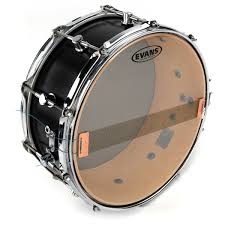
Snare drum
One prominent use of the snare drum is in Ravel’s Bolero, where the drummer has to repeat the same 2-measure pattern 170 times in a row.
Ravel: Bolero. (London Symphony Orchestra; Valery Gergiev, Conductor)

Triangle
Rimsky-Korsakov: Sheherazade: IV. Festival at Baghdad – The Sea. (Philharmonia Orchestra; Enrique Bátiz, conductor)
Note also how other percussion instruments, including the cymbals and drums, also contribute to that sense of excitement. With its little bursts, it’s almost as though a parade is quickly passing in and out of hearing.
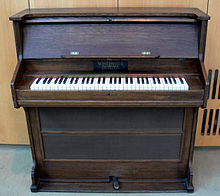
1920s German Celesta
Liszt: Piano Concerto No. 1 in E flat: III. Allegretto vivace. (Lise de La Salle, piano; Gulbenkian Orchestra; Lawrence Foster, Conductor)
The celesta is one of the most beautiful and ethereal instrument sounds in the orchestra. It looks like a small piano, but instead of strings inside, it has metal plates over wooden resonators.
The name of the instrument, celesta, means “heavenly.” The instrument was invented in the late 19th century in Paris and had one of its earliest appearances in Tchaikovsky’s Nutcracker in the ‘Dance of the Sugar Plum Fairy’. The sound was so new that the audience didn’t know what instrument could be responsible.
Tchaikovsky: The Nutcracker, Op. 71: Act II Tableau 3: Variation 2: Dance of the Sugar-Plum Fairy (Russian National Orchestra; Mikhail Pletnev, Conductor)
All of the instruments in the percussion section are used to underline the rest of the orchestra, either through an exclamation point provided by the drums or cymbals, or as a line that keeps the whole sound field in order, as we heard with Ravel’s Bolero. Whatever its use, the percussion section adds real colour to the orchestra and without it, so much of the excitement would be missing.

